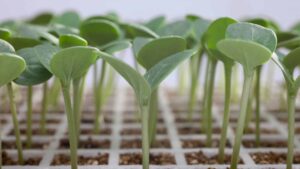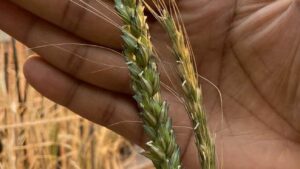The genetic control of wheat grain size is now better understood, thanks to an AHDB-funded PhD Studentship.
Student Jemima Brinton spent three years (2014–17) looking at the genetic control of grain weight, in particular the genes involved in grain length and width.
Prior to the study, sections of two wheat chromosomes – called QTL 5A and 6A – were known to be associated with these two key yield-related traits.
A set of ‘near isogenic’ wheat lines (plants which have nearly the same genetic makeup) was used to help further characterise these two influential chromosome sections.
Jemima found that QTL 5A and QTL 6A act through different mechanisms to increase grain weight.
QTL 5A was found to act after fertilisation and increase pericarp cell size and associated grain length (4.0 per cent). QTL 5A also had a smaller effect on grain width (1.5 per cent) during late grain development.
QTL 6A was found to act during very early grain development, perhaps prior to fertilisation, and was associated with an increase in final grain width (2.3 per cent).
The physical size of both QTLs are currently large and contain several hundred genes. This makes it a challenge to identify the most influential genes.
The material and results from this project has been made available to UK breeding companies as part of ongoing efforts to improve targeted breeding.
AHDB invests around £1 million a year in doctoral research at UK universities, colleges and research institutes as part of its work to develop a new tranche of agricultural and horticultural scientific expertise.
Student Report 45 ‘Understanding the genetics of wheat yield to deploy high and stable yielding wheat varieties across UK environments’ can be found at cereals.ahdb.org.uk/phd
Source: AHDB













